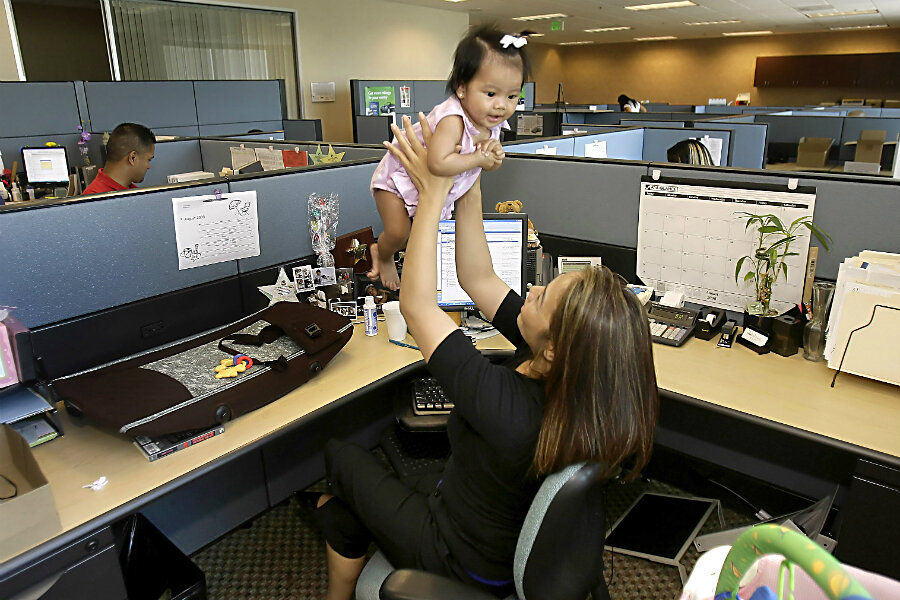Should parents be allowed to bring children to the office?
Loading...
A growing office trend that allows parents to bring their newborns to work expanded recently with a new policy at two Washington state agencies.
The Washington state Department of Health and the Washington Traffic Safety Commission are allowing parents to bring their babies to work until they turn six months old, following the enactment of a new “Infant-at-Work” policy.
Communications consultant for Washington Traffic Safety Commission Erica Stineman says the arrangement has been ideal for her so far. Stineman brings her four-month-old daughter, Lydia, into the office three days a week. "It was really exciting to know that I wasn't going to have to be bringing her to day care after eight weeks of being on maternity leave," Stineman told ABC News. "Having this extra time with her just meant the world to me."
While many companies have set up child care facilities at work for many years now, bringing a baby into the office is an emerging trend that raises concerns about employee productivity and distractions for colleagues.
However, companies that allow babies in the office cite many benefits.
“In a lot of ways it’s helped productivity,” Chris Madill, the Washington Traffic Safety Commission deputy director said. “Morale is high and it’s been a good thing for our office.”
While this trend is mainly geared towards parental well-being and critical bonding between mother and infant, companies cite mutual benefits for the employer and employee.
The Washington state Department of Health said, “the agency expects the Infant-at-Work policy to help increase employee morale, lower turnover costs due to higher retention rates, and reduce overall health care costs for babies due to easy-access breastfeeding.”
The Nevada State Health Division first piloted their “bring your infant to work” in 2009 and reaped benefits from the program, including, “greater employer appreciation and loyalty, lower healthcare costs, higher breastfeeding rates, and families reporting greater financial stability.”
But how practical is bringing a baby to the office? “After the initial novelty wears off, babies become a fixture in the office and are not seen as a distraction," The Association of State and Territorial Health Officials observed in its research on Nevada’s program.
About 200 organizations and companies in the United States now have “infant at work” policy, according to the Parenting in the Workplace Institute.
Child care has emerged as an important issue for both employers and employees in recent decades. A study by the US Department of Labor observed that, during that period,
"America has become a society in which everyone is expected to work – including women with young children. But many of society's institutions were designed during an era of male breadwinners and female homemakers. What is needed is a … reform of the institutions and policies that govern the workplace to ensure that women can participate fully in the economy and that men and women have the time and resources to invest in their children."
According American Health Public Association says 45 percent of the workforce is female, but 22 percent of women don’t return to work after their first baby is born.
The program attempts to address the current workplace mismatch by allowing for an easier transition back into work for the mother, according to the association.







